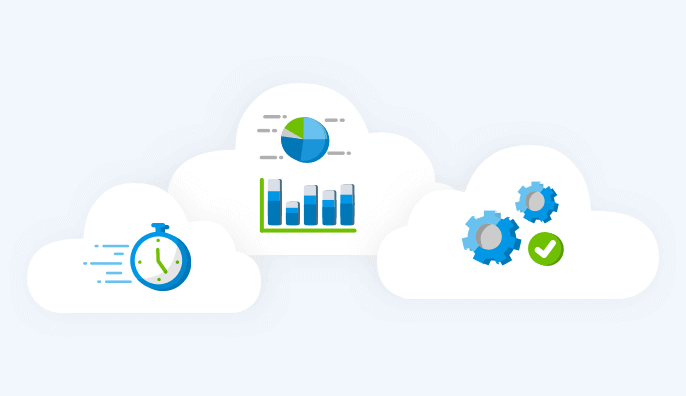What is an IT Ticketing System?
An IT support team is only as good as its ticketing system. Learn about the best IT ticketing systems for your organization.
What's in this article?
- Why do I need an IT ticketing system?
- IT ticketing software came after paper
- When was the first IT ticketing management system?
- What's the primary purpose of a ticketing system?
- What are other purposes of a ticketing system?
- Why is a ticketing system needed?
- Who benefits from an IT support ticketing system?
- Who uses IT support ticketing systems?
- What kind of IT ticketing systems are available?
- Giva is a service management leader in ITSM
An IT ticketing system, which is also referred to as IT ticketing software, can help any organization deliver superior customer service to their internal customers who work for the organization and use information technology products. An IT ticketing system is used by the IT service desk or help desk, which are people who work in the information technology department. It helps manage and streamline the process of issue resolution.
Why do I need an IT ticketing system?
The IT department is a service organization. Their goal is to provide outstanding customer service to employees using technology products. Organizations purchase technology products with the hope of increasing employee productivity. If employees are not trained and well supported, then the result is lower productivity.
IT ticketing software came after paper

Before IT ticketing software was available, people who were called "agents" or "operators" wrote down problems on pieces of paper. That's right, yellow note pads, white sheets of paper, or a just a composition notebook. Seems like the Stone Age, and yes, sticky notes were not yet invented! Were you even born?
These early teams created the first generation of basic ticketing systems out of necessity with a home-grown paper version. To efficiently manage all this information, sequential numbers were added to each piece of paper, et la violá — they named them "tickets". Support ticketing systems were created by necessity, and teams passed around pieces of paper. Can you imagine?
When was the first IT ticketing management system?
The time of the first ticketing management system was when Apple Computer launched and IBM PCs were being widely used by corporations, but computer networking and attaching printers were just beginning. There were only a few software applications. Printers, networking PCs and software applications increase complexity. Companies realized that they needed specially trained people and eventually a department to support all this new technology. Yes, indeed the world changed. We're not in Kansas anymore for sure!
What's the primary purpose of a ticketing system?

There was a day when the sun shined brightly on IT people and the first ticketing software was launched. There was probably a collective sigh of relief and much rejoicing.
IT ticketing systems have many purposes. To troubleshoot problems, usually there are many technical details including symptoms that must be carefully documented. The problem-solving process can involve a triage approach where technical people collaborate with the customer. First and foremost, IT support ticketing systems are a place to put all relevant information so that groups can productively work together and quickly solve problems for customers. A modern IT ticket stores information including priority/severity level, service level agreement, status, assignee, service group, root cause, customer contact information, category for reporting, time stamped notes history log, email dialogue, screen shots, files, tracking time spent, and much more.
Agents can route IT tickets around an organization to people with the appropriate expertise so they can help solve problems. The resolution may be in the form of a permanent fix or just a work around.
What are other purposes of a ticketing system?
Organizations need tools to help streamline the problem resolution process so that their employees can remain highly productive. IT ticket software is a tool to track employee requests submitted live or even walk-ins. A good ticketing system collects incoming support requests from all the channels. It can be used to track alerts from failing hardware or software. Also, IT ticketing systems can track assets, software licenses, requests for change (RFCs) and other incidents that require action from the IT department. IT tickets can also automatically be created in the future for any work that has to be completed on a set schedule, or serve as a reminder for a project. After an IT ticket is created, it can be assigned to a group or an individual person for follow up.
Companies sometimes outsource technology support for their network and PCs. The outsourced organization can also easily access the ticket software if it's in the cloud. There is a very large outsourcing industry called Managed Service Providers (MSP) that provide technical support services for the most complex information technology challenges, including cyber security and fortifying networks against hackers.
There was a time when IT people roamed the hallways of an office to solve PC problems before PCs were networked. As the use of technology quickly grew, this approach did not scale. IT ticketing software funnels all the service requests to a single place. A ticketing system can also manage requests from other departments like human resources, facilities, legal, customer service, etc. Any department besides IT can track all the requests it receives and quickly route them to the correct people for follow up in and resolution.
Why is a ticketing system needed?

Ticketing systems are especially useful for large organizations. For example, the IT department at a law firm with 1,000 employees may receive over 4,000 employee help requests each month. Most law firms use over 100 software applications and manage desktops, laptops, tablets, mobile phones, etc. for attorneys that are working in the office, on the road, in court, or working at home. Without an IT ticketing system, it is impossible to manage this high volume of help requests.
A knowledge base can capture and reuse resolutions, so that IT people are not reinventing the wheel for common recurring problems. There's an enormous amount of useful information that are in IT tickets. A good IT ticketing system will allow you to quickly turn this useful information into a knowledge base.
IT ticketing software can also be very helpful for an organization of any size. After an organization grows to about 100 people, it is difficult tracking issues with just an email inbox.
Who benefits from an IT support ticketing system?
Employees working in an organization using technology can benefit from an IT support ticketing system. For example, the IT help desks of hospitals support hundreds of software applications. One of the most important is an electronic medical health record, or eHR. This is where all the protected health information (PHI) of patients is stored and managed. eHRs are expensive and require complex HIPAA-compliant software applications. Doctors, nurses and other clinical professionals are under constant pressure and deadlines to care for their patients, sometimes with life and death consequences.
The IT service desk of some of Giva's hospital/health care customers using our HIPAA-compliant ticketing software create over 500 tickets a day supporting over 10,000 employees. They run a 24 x 7 x 356 operation to deliver outstanding technical support to all those using technology.
Who uses IT support ticketing systems?
The next time you have a chat with a doctor or a nurse, ask them, "How's your software running today?" You're likely to get a roll of the eyes, a shake of the head, a forced smile and maybe some words. Invariably, there are many daily challenges in keeping electronic medical health records running at peak performance. A hospital operating room and the ER are also run with sophisticated hardware and software. IT service desks using ticketing systems are the first level of support and primary contact for clinical professionals when they need help with the hospital's technology tools. Ultimately, the beneficiaries of IT support ticketing systems are clinical professionals and patients as well. Without the IT service desk using ticketing systems, hospitals and healthcare organizations would not be able to provide healthcare services and function as they do in today's modern hospital and healthcare world.
IT ticketing software provides self-service knowledge bases and Frequently Asked Questions (FAQs) so employees can try to solve their own problems. Services such as automated password resets can help employees quickly and securely interact with systems without requiring IT resources.
What kind of IT ticketing systems are available?

Today's IT ticketing software is available in a wide variety of features and functions as well as price points. Today, most organizations only purchase cloud-based IT ticketing systems. On-premise solutions which are installed on local servers are still available, but vendors are no longer investing in these products, so it only makes sense to buy a cloud-based system. On-premises solutions are much more expensive to manage and maintain as organizations must manage servers, back-up, redundant failover, business continuity, etc. Also, there are much higher security risks for managing your own servers and software. In today's world of cyber threats and hacks, it makes sense to only buy cloud-based IT ticketing software. Make sure that the servers are hosted with a service provider who manages thousands of servers and who has deep knowledge about maintaining servers and security risks.
US-based and managed cloud servers
For USA customers, Giva's servers are in redundant locations throughout the USA and managed by Databank which is an organization with 65 data centers in 29 markets and backed by the ownership of DigitalBridge (NYSE: DBRG). All our infrastructure is managed by USA workers, and there is no outsourcing outside of the USA.
IT Service Management (ITSM)
IT ticket software can also be part of an IT Service Management (ITSM) platform. ITSM is a framework for service delivery, and it stresses continual improvement and delivering IT as a service. These platforms offer planning, delivery, and support of IT services by integrating people, process, and technology. Using an ITSM platform requires that IT people and management are trained and certified, so that the platform is properly used.
ITSM systems are more comprehensive than just IT ticketing software. They are excellent tools for larger organizations to manage all IT services end-to-end. Organizations with less than 50 IT people may not need an ITSM platform. Everybody using the system in IT must be trained and understand a common ITSM language, processes, procedures, etc. An ITSM platform can help ensure that employee issues are resolved quickly and in an efficient manner. ITSM processes ensure that learning is documented, root causes identified, and similar problems can be eliminated in the future. ITSM platforms also differ from IT ticketing software in that they assure IT goals are aligned with business goals.
Giva is a service management leader in ITSM
Giva is established as a leader among ITSM solutions. Our product portfolio is HIPAA compliant and built for the cloud. Giva has a unique approach to ITSM. All our applications are ITIL certified. With Giva you can start with just using one module. For example, you can start using our IT ticketing software, and then when ready, move on to using the other ITSM modules. The modules are highly integrated, but do not need to be used together. With other ITSM products, you need to configure and customize all the modules before you can use any of the modules. Giva provides a much easier way to get started with ITSM.
See Videos of Giva's ITSM Platform:
